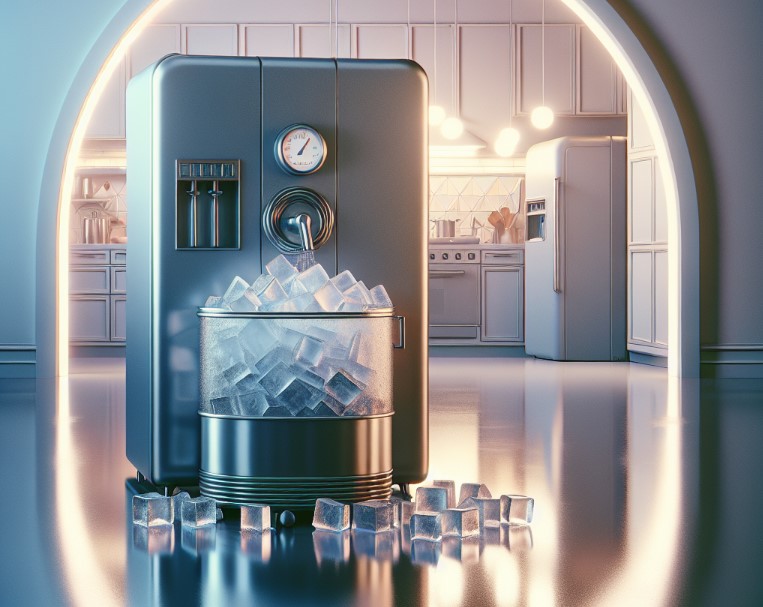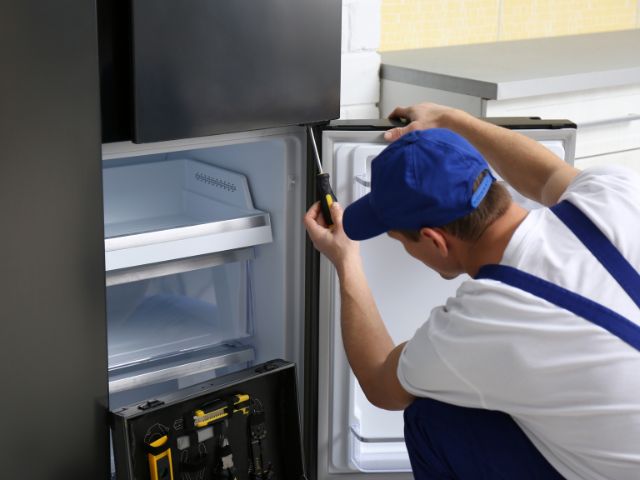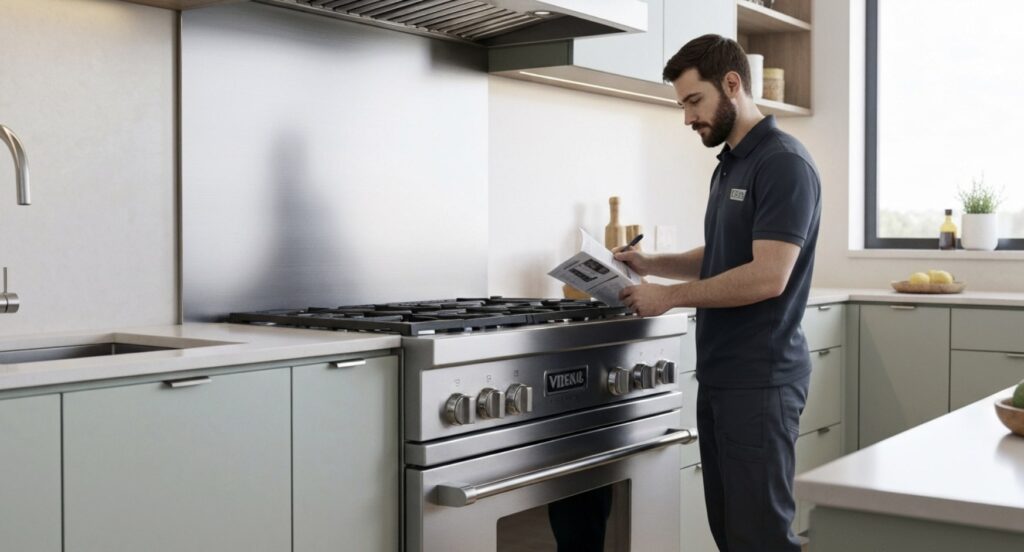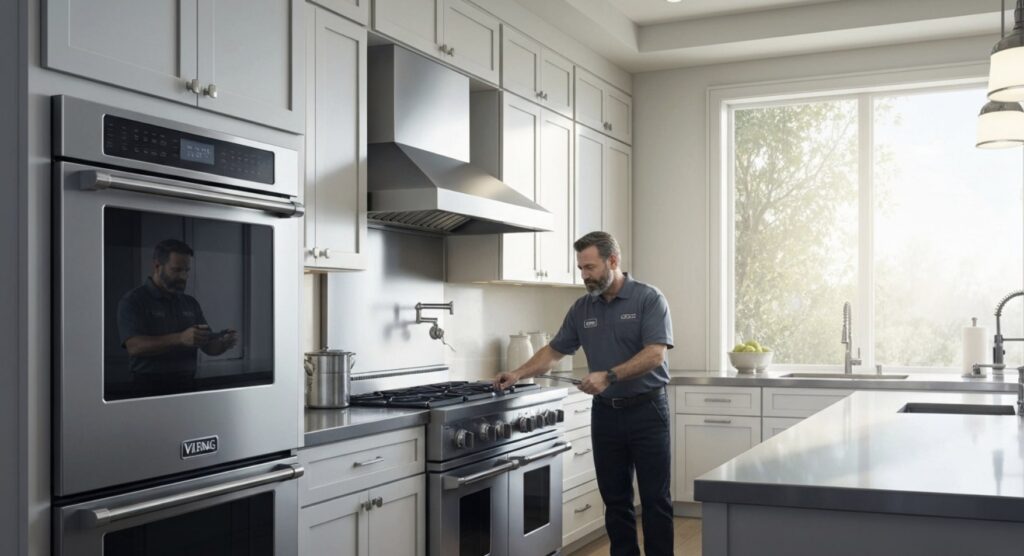A Viking ice maker can have problems like any other appliance. You might end up with a glass of warm water instead of nice cold ice. A common issue is when the ice maker does not fill with water. This can happen for different reasons related to the water supply, parts inside, or electronic controls. Knowing the possible causes and steps to fix it can help you get your ice maker working well again.
In this blog, we will discuss some troubleshooting steps to help you figure out why your Viking ice maker is not filling with water. From checking the water supply line to inspecting the inlet valve and ensuring the electronic controls are functioning properly, we will guide you through the process of identifying and resolving the issue. By following these steps, you can hopefully enjoy a refreshing glass of ice-cold water soon!
Beginner’s Guide to Troubleshooting
Before you call a technician, you can try some simple fixes at home. You will need a few tools and a bit of patience.
What You Will Need
Before you start fixing your Viking ice maker, get a few basic tools to help you:
- Bucket or bowl: This will catch any water when you disconnect lines or clean the ice maker.
- Adjustable wrench or pliers: These are useful for disconnecting the water line and reaching the water filter if you need to.
- Soft-bristled brush or old toothbrush: This is good for cleaning debris or mineral buildup from the inlet valve and other parts.
- Clean cloth or towel: Use this to dry parts after cleaning and before you put everything back together.
- Water filter (if you need one): Depending on your ice maker model and how long it has been since you replaced it, having a new water filter ready can be useful.
Check for common issues like a clogged water line or malfunctioning valve
The first thing to do when troubleshooting is to check the water supply line that goes to your ice maker. Make sure the valve that provides water to the ice maker is turned on. If the valve is only partially closed, it can slow down water flow and stop the ice maker from filling right.
Here’s what to look at:
- Kinks or bends: Fix any kinks or bends in the water line, as they can block water flow.
- Clogs: See if there’s any ice or debris blocking the line and remove it if needed.
- Water pressure: Make sure the water pressure from the source is good.
Inspect and clean the ice maker’s components, such as the inlet valve and water filter
If the water line is clear, clean the ice maker parts. Mineral build-up can block the inlet valve, preventing water flow. Unplug the ice maker for safety, locate the inlet valve at the back, and disconnect the water line. Gently clean any mineral deposits with a brush or toothbrush. Replace the water filter if needed to ensure proper water flow to the ice maker.
Test the water pressure and temperature to ensure they are within the recommended range
The optimal water pressure for a Viking ice maker is typically 20-120 psi, ensuring proper water flow. Water temperature of 40°F to 50°F is ideal for ice production. Consult your manual for specific settings and use gauges to monitor pressure and temperature.
Reset or replace any faulty electronic components, such as the control module or water level sensor
If the previous steps haven’t resolved the issue and you’ve confirmed that the water supply, valve, and filter are functioning, the problem might lie in your ice maker’s electronic components. Modern appliances rely on electronic control modules and sensors to operate effectively. If the control module malfunctions, there’s an issue with the water level sensor, or a wiring problem exists, your ice maker may cease to function properly.
Seek professional help if all troubleshooting steps fail to resolve the issue.
While this troubleshooting guide talks about why a Viking ice maker might not be filling with water, some problems may need a skilled repair technician like Viking Appliance Repair Pros. If you have carefully followed the steps above and still face issues with your ice maker, it is a good idea to get help from a service center that knows about Viking appliances. Trying to fix complicated problems without the right skills could make things worse or even be unsafe. A qualified technician like us has the right knowledge, tools, and experience to fix more difficult issues.
Conclusion
In conclusion, if your Viking ice maker is not filling with water, you need to follow a step-by-step method. Start by checking common problems. Next, look at the parts and check the water conditions. If you still have issues, it is best to get help from a professional. For more DIY ice maker tips, check out our blog on How to Prevent and Remove Ice Maker Odors.
Frequently Asked Questions
How often should I clean my Viking ice maker?
To keep your ice maker running well and to avoid problems like clogs or low water flow, you should clean it every 3 to 6 months. This includes cleaning the ice bin and the water filter. Check your appliance manual for the best cleaning tips for your specific model.
What if my ice maker is making ice but not filling with water?
If your ice maker makes ice but is not filling with water, there might be an issue. It could be a problem with the water inlet valve. It could also be a problem with the water level sensor. Another option is that there might be a blockage in the water line that goes to the ice maker.
Can a blocked filter cause my Viking ice maker to stop filling with water?
A blocked or clogged water filter can limit or completely stop the water flow to your Viking ice maker. This means it won’t fill with water or make ice. It is important to replace the filter regularly.







